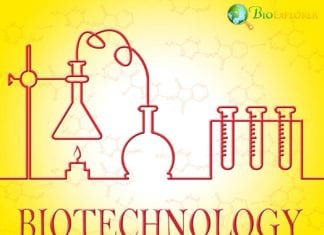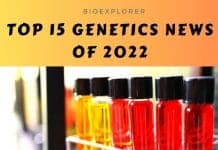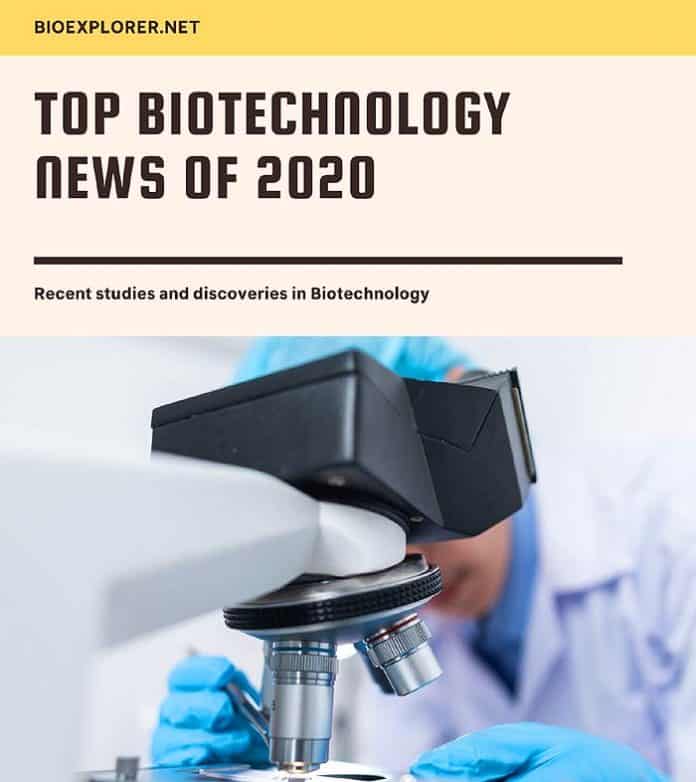
The year 2020 has presented several new challenges to the world. Scientists needed to find ways to fight an entirely new pathogen and also continue to solve persistent problems that have not disappeared with the pandemic.
These problems ranged from finding solutions to produce sustainable alternatives to fuel developing new treatments for cancer and other diseases. Despite the difficulties the global lockdown created for science, the specialists in biotechnology managed to emerge from this situation with honor.
Table of Contents
- Top 10 Biotechnology News in 2020
- 1. Uniting nerve cells and computer chips: a new breakthrough in developing brain-machine interface made [Italy-UK, February 2020].
- 2. Diagnosing multitudes: a novel diagnostic tool for viruses developed – [USA, April 2020].
- 3. Weaponizing macrophages against cancer – the scientists modify macrophage receptors to make them see cancer cells as targets [March 2020, USA].
- 4. Injecting new energy into the liver: mitochondria were introduced into liver cells for the first time [China, May 2020].
- 5. Forgoing plasmids to modify parasites: a new, safer CRISPR method to create modified Toxoplasma cells [Switzerland, April 2020].
- 6. Bringing algal wisdom to leaves: scientists engineered plants with algal photosynthetic machinery [UK, December 2020].
- 7. A Trojan Horse for cancer made from nanoparticles: the scientists develop a novel approach to kill cancer cells based on nanoparticles [Germany, December 2020].
- 8. An engineered yeast helps produce biodiesel from cardboard [South Korea, May 2020].
- 9. Nanoparticle construction kit to make a vaccine against COVID19: Scientists develop a nanoparticle-based vaccine [USA, October 2020].
- 10. Planting new drugs into yeast: a new way to use yeast to produce plant-based medicine proposed [USA, September 2020].
Top 10 Biotechnology News in 2020
Here we (the BioExplorer team) present the best developments in biotechnology made in the year 2020.
1. Uniting nerve cells and computer chips: a new breakthrough in developing brain-machine interface made [Italy-UK, February 2020].
Current trends in neuroscience and computer sciences aim to distinguish between the “natural” brain and the artificial network less strictly.
There are special so-called neuromorphic devices developed that can act and learn like human brain cells. A joint team of scientists from the United Kingdom, Italy, and Switzerland took the idea of such devices a step further:
- They have cultivated rat nerve cells on a special titanium thin film.
- The rat nerve cells were connected to artificial nerve cells made from silicon that can generate electrical spikes.
- The two components were connected by an element called a memristor that can remember the current value that goes through it.
- Memristor has properties similar to synapses – the particular structures that help transmit signals between neurons.
- Using these components, the scientists have created two model paths:
- A silicon-to-brainpath that sends signals from an artificial neuron to a natural one.
- A brain-to-silicon path, where spikes generated by rat neurons can be transmitted to artificial structures.
- After proving that the signal exchange is possible between artificial and rat nerve cells, the team went a step further.
- They have established a connection between artificial neurons and rat neurons through the internet.
- In this experiment, a chip with silicon neurons was in Zurich, Switzerland. A memristor was situated in Southampton, United Kingdom. The last component – an array of nerve cells obtained from rats – was located in Padua, Italy.
- The signals were transmitted successfully, thus proving such an approach is possible.
The new technology can have multiple applications in treating brain injuries and neurological disorders.
- Reference: “Memristive synapses connect brain and silicon spiking neurons | Scientific Reports”. Accessed May 01, 2021. Link.
![]()
2. Diagnosing multitudes: a novel diagnostic tool for viruses developed – [USA, April 2020].
The current pandemic has shown how important it is to diagnose viral diseases quickly and effectively. Most current diagnostic methods are aimed at the diagnosis of a single type of virus. If one wants to test the sample for several diseases, several separate tests would probably be needed.
Many viral diseases are quite dangerous. Each of them requires a specific type of treatment. Thus, delays in diagnosis can put the patient in danger. A team of specialist at Harvard University, USA, have put together a method that allows quick and efficient testing for multiple viruses on a single platform:
- The researchers used special reagents that detect the main component of viruses – nucleic acids to perform testing.
- These agents are based on CRISPR and can detect fragments that are specific to various virus types.
- The reagents are organized on a platform with multiple small wells.
- The samples can be copied multiple times, added to the wells, and the fragments inside can link to the sample fragments if they are similar in sequence.
- This way, the system allows testing for all 169 known human viruses simultaneously.
- The new platform was given the name CARMEN – Combinatorial Arrayed Reactions for Multiplexed Evaluation of Nucleic acids.
- The system is very discerning. It can differentiate between different influenza A strains or newly discovered mutations in the known viruses.
- It is also possible to add new viruses to it – including new variants of SARS-Cov2.
This approach can assist in rapid COVID19 diagnosis and help find viral diseases that are hard to diagnose by other means.
- Reference: “Massively multiplexed nucleic acid detection with Cas13 | Nature”. Accessed May 01, 2021. Link.
![]()
3. Weaponizing macrophages against cancer – the scientists modify macrophage receptors to make them see cancer cells as targets [March 2020, USA].
Recently, new immunotherapy was successfully developed against blood cancers. The new approach used the immune T cells of the patients with a unique addition. This modified receptor made the T cells drawn explicitly to cells that have become cancerous.
These receptors were called CAR – chimeric antigen receptors, and the cells themselves are usually called CAR-T cells.
Unfortunately, this approach was effective only for cancers that develop in the blood cells. These cells are not as effective against tumors.
A research team at the University of Pennsylvania, Philadelphia, PA, USA, has decided to try to use another type of immune cells – macrophages:
- Unlike T cells, macrophages are non – specific immune cells. They usually act as the first line of defense and basically eat up possible pathogens.
- The process of destruction of pathogens by macrophages is called phagocytosis.
- The researchers wanted to add a CAR receptor to macrophages to destroy cancer cells in the tumor, preventing its growth.
- To introduce the new receptor into the macrophage cells, a viral vector was needed.
- The suitable vector, Ad5F35, was selected after multiple attempts.
- This viral vector was both safe and effective.
- The introduction of the vector also made macrophages promote inflammation and call other immune cells to the tumor vicinity.
- In experiments with mice injected with ovarian cancer cells, injecting new CAR-M cells led to a decrease in tumor growth.
- Mice given the new type of cells also survived longer, though the cancer was still not completely eliminated.
- Moreover, a combination of new CAR-M cells and normal immune T cells had an even better anti-cancer effect.
The team hopes to start a trial of the new approach on patients with ovarian cancer as soon as possible.
- Reference: “Macrophages get a CAR | Nature Reviews Cancer”. Accessed May 01, 2021. Link.
![]()
4. Injecting new energy into the liver: mitochondria were introduced into liver cells for the first time [China, May 2020].
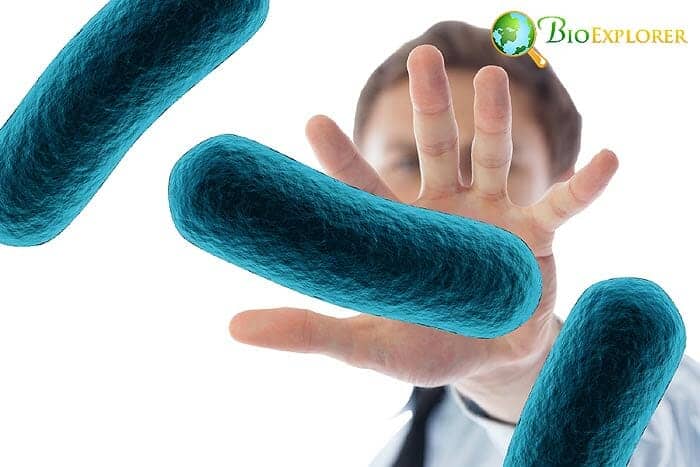
The liver is one of the crucial organs in the body – we cannot live without it. It regulates multiple processes and filters toxins from our blood. Liver function may decline due to various reasons. In extreme cases, only transplantation can help.
In some cases of liver failure, for example, in childhood diseases, the leading cause of liver problems is that the liver cells lack energy. Their energy factories, mitochondria get damaged or destroyed. In such cases, replenishing mitochondria in the cells could save the organ.
A research team from China, in collaboration with the University of Connecticut, has proposed a unique method of introduction of mitochondria into liver cells:
- It was noticed that if mitochondria covered with a specific substance called asialoorosomucoid‐polylysine (AsOR‐PL) are added to the liver cells culture, the cells take up the mitochondria.
- The team decided to try to replicate this in live mice.
- The researchers knew that when mitochondria are taken up by the cells, they are transported inside tiny bubbles – endosomes.
- To ensure that mitochondria would not get destroyed by the liver cells, an additional special agent had to be used that destroys those bubbles.
- The researchers have created a complex that included mice mitochondria, AsOR-PL, and endosome-destroying agent.
- The complex was injected into mice.
- At the end of the experiment, it was found that 27% of mitochondria have successfully gotten into the liver.
- Some mitochondria were found in the spleen and lungs.
This experiment only shows that donation of mitochondria can be potentially performed. Still, the method must be perfected before it can potentially be used for treatments.
![]()
5. Forgoing plasmids to modify parasites: a new, safer CRISPR method to create modified Toxoplasma cells [Switzerland, April 2020].
A research group focused on studying two parasitic unicellular organisms – Toxoplasma gondii and Besnoitia besnoiti have recently presented a new, safer method of gene editing in these parasitic single-celled animals.
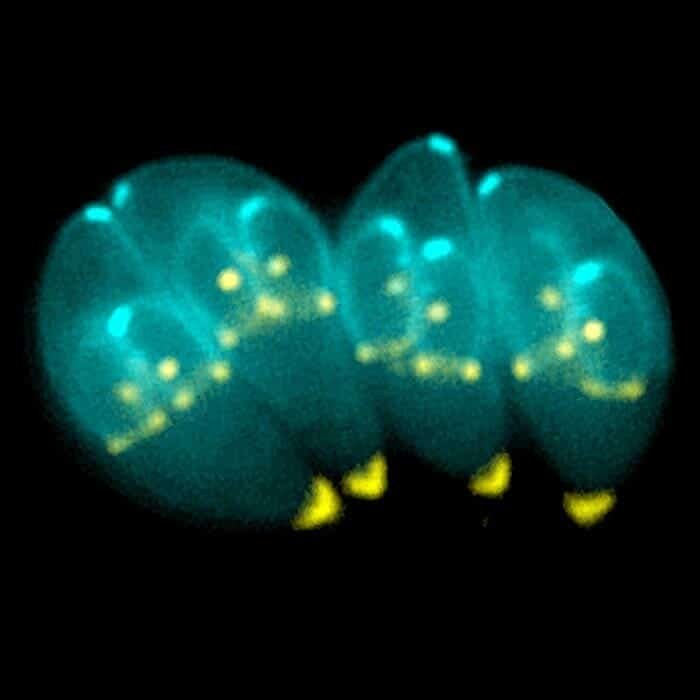
- T. gondii is a well-known parasitic organism that causes toxoplasmosis in cats and humans.
- Toxoplasmosis is especially dangerous during pregnancy.
- B. besnoiti is a recently discovered organism that causes a severe illness in cattle called besnoitiosis.
- Disorders caused by these parasites are tough to treat because these organisms can form rigid structures called oocysts.
- These cysts are entirely resistant to medical agents.
- One of the potential approaches against these illnesses is to create modified organisms that cannot form cysts in the first place.
- These safer organisms can be the basis for a live vaccine.
- Currently, such modifications are possible with the use of the modern CRISPR/Cas9 approach.
- However, the traditional protocol for CRISPR/Cas9 has its drawbacks.
- As a rule, the editing is performed by introducing a circular DNA molecule called a plasmid into the cell of interest.
- The plasmid contains the enzyme Cas9 that acts as “scissors” and special sgRNAs that help guide it.
- The use of this system is tricky – if the Cas9 stays too long in the cell, it can cause additional mutations. If it stays temporarily, it may not do the intended job.
- The researchers decided to forgo the typical protocol and created complexes that contained a mix of specially engineered sgRNAs and Cas9.
- Instead of using plasmids, the complexes were introduced into the cultured parasitic cells by another method – electroporation.
- This way, it is possible to achieve necessary mutations more efficiently.
- The genes for the formation of cysts are already known. With a safer method of CRISPR editing, it is possible to create a live, safe vaccine against toxoplasmosis.
- This method can also be safe to use in plants – making safe genetically modified food products a reality.
- Reference: “View of A streamlined CRISPR/Cas9 approach for fast genome editing in Toxoplasma gondii and Besnoitia besnoiti”. Accessed May 01, 2021. Link.
![]()
6. Bringing algal wisdom to leaves: scientists engineered plants with algal photosynthetic machinery [UK, December 2020].
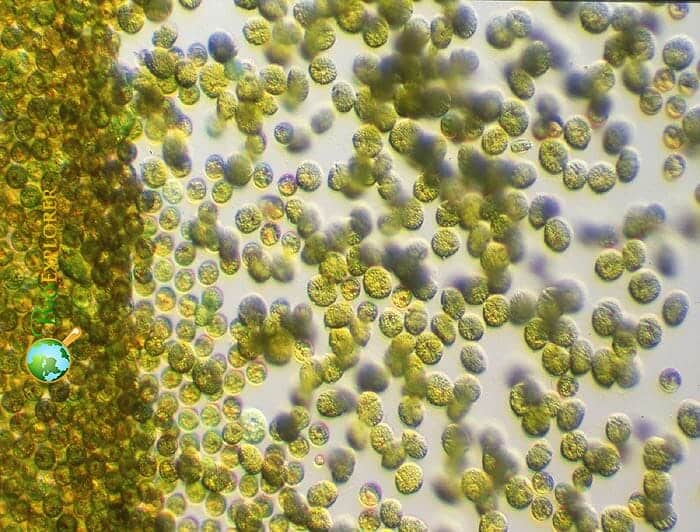
Algae and land plants have slightly different mechanisms of photosynthesis. At first glance, both types of plants rely on an enzyme called RuBisCO. This enzyme performs the first step in a chain of reactions that uses carbon dioxide to produce glucose.
Still, when one compares the efficiency of photosynthesis in land plants and algae – algae win. This happens because algae streamline the process of photosynthesis. Inside algal chloroplasts, RuBisCO enzymes group together into a structure called the pyrenoid.
The pyrenoid gathers up all the incoming carbon dioxide. The RuBisCO enzymes work as a team to produce the necessary metabolites for the next steps.
A team of specialists in molecular plant science at the University of Edinburgh, Edinburgh, UK, has decided to use genetic engineering and “teach” plant cells to make their own pyrenoid analogues.
- It was known that an algal pyrenoid formation depends on the presence of RuBisCO and a protein that links the enzymes together called EPYC1.
- The scientists also knew the sequences of genes for RuBisCO and EPYC1 from the algae chlamydomonas reinhardtii.
- Using CRISPR, both genes were introduced into the model plant Arabidopsis thaliana.
- In the cells of the engineered plants, the RuBisCO enzymes condensated together, forming a structure similar to the pyrenoid.
- The engineered plants had been able to grow and function normally, even with this new structure.
Photosynthesis is a complex process, and algae do rely on the pyrenoid only. The scientists intend to engineer plants that contain the whole complex system of algal photosynthesis in the future.
With more efficient photosynthesis, crops can potentially grow faster and produce more food. This new approach is only the first step on the road to this ambitious goal.
- Reference: “Condensation of Rubisco into a proto-pyrenoid in higher plant chloroplasts | Nature Communications”. Accessed May 01, 2021. Link.
![]()
7. A Trojan Horse for cancer made from nanoparticles: the scientists develop a novel approach to kill cancer cells based on nanoparticles [Germany, December 2020].
One of the reasons why cancer treatment is so hard to develop is that the agents kill cancer cells are poisonous to normal cells. An ideal cancer drug has to be a ruthless, target-driven ninja that never harms bystanders.
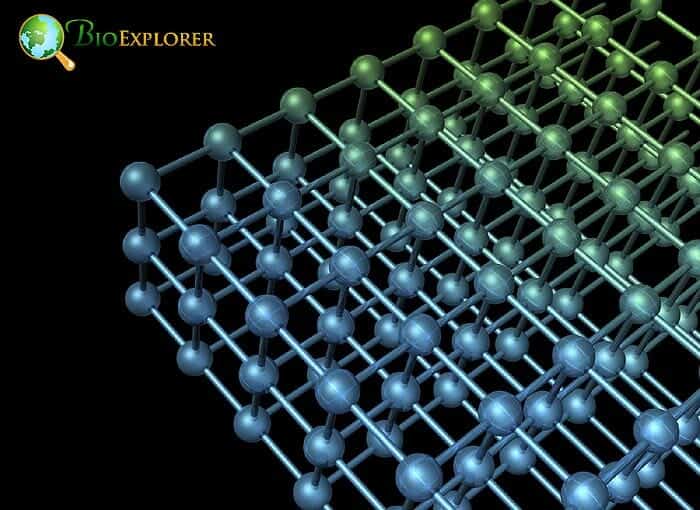
A research team at the Ludwig-Maximilian University in München, Germany, seem to have created such a perfect assassin:
- The team decided to use calcium phosphate and citrate as anti-cancer agents.
- Both molecules can trigger cell suicide when they reach high levels.
- Usually, a cell keeps a strict balance of these compounds to protect itself from dying.
- The scientists managed to circumvent the cancer cells’ defenses by introducing the chemicals in the form of nanoparticles.
- The nanoparticles are additionally coated by a layer made from lipids.
- Usually, when something is taken up by a cell, the incoming molecules are surrounded by a piece of the cellular membrane.
- In cancer cells, cellular membranes are less robust.
- When the nanoparticles are taken by cancerous cells, the protective layer made by the cancer cell membrane ruptures, and the nanoparticles are released into the cell, killing it.
- When the nanoparticles are taken up by a normal cell, this does not happen.
- The experiments in mice have shown that the application of the newly developed drug has significantly reduced the size of tumors growing in their lungs.
- The doses needed were small, and only two applications were needed for the drugs to take effect.
The new approach can potentially make way for safer and more efficient anti-cancer drugs.
- Reference: “Synergistic Combination of Calcium and Citrate in Mesoporous Nanoparticles Targets Pleural Tumors: Chem”. Accessed May 01, 2021. Link.
![]()
8. An engineered yeast helps produce biodiesel from cardboard [South Korea, May 2020].
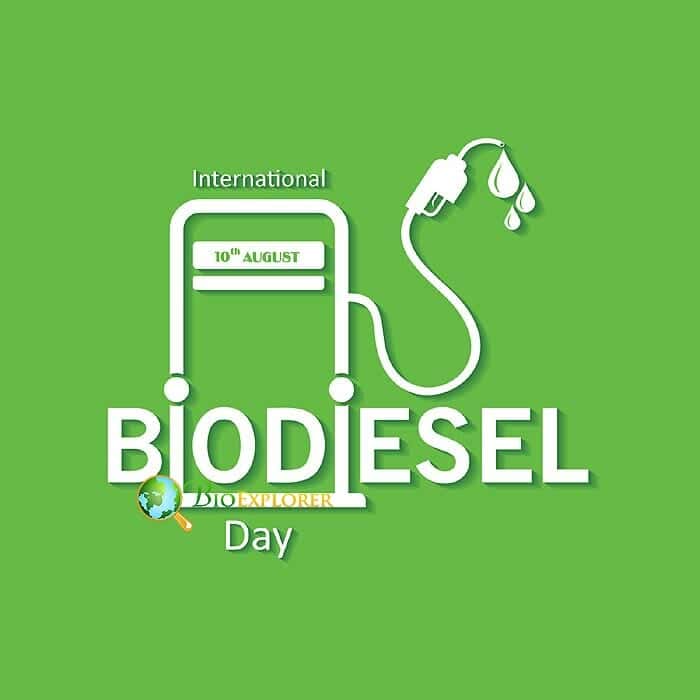
The interest in biodiesel is currently growing. Biodiesel is safer than regular petroleum diesel and produces fewer emissions. Biodiesel is usually made from products -with a high level of fats usually plant oils. The problem is that those products also have other uses, mainly food. Ideally, it is better to produce biodiesel from some kind of waste that does not compromise food supplies.
Thankfully, it is possible to produce the fats needed for biodiesel from sugars such as glucose and xylose. These sugars can be found in plant cells that contain lignin and cellulose. It is simple to use plant-based waste – cardboard, paper, bark, plant stems – as a potential source of biofuel.
One of the microorganisms that can effectively transform sugars into fats is yeasts. Yet regular yeasts cannot perform usually process glucose, not xylose. This means a considerable part of the initial source material goes to waste.
A team at the Clean Energy Research Center of the Korea Institute of Science and Technology in Seoul, South Korea, has decided to engineer a microorganism that can produce high amounts of fats from both types of sugars.
- A yeast called Yarrowia lipolytica uses glucose to make fats at a relatively high level.
- Yet, a wild type of yeast cannot process xylose, another sugar abundant in the material derived from plants.
- A previously developed mutant yeast can convert xylose to fats but with low efficiency.
- The scientists introduced another type of xylose-processing enzyme taken from Saccharomyces cerevisiae into the Y.lipolytica.
- The team also performed complex steps to accelerate the evolution of the new yeast strain and make it process both sugars as efficiently as possible.
- As a result, they have created a modified strain that produced the highest known amount of fats from paper and plant waste.
With the new strain, it would be possible to use plant/paper waste as efficiently as possible for biodiesel production.
![]()
9. Nanoparticle construction kit to make a vaccine against COVID19: Scientists develop a nanoparticle-based vaccine [USA, October 2020].
Nanoparticles are considered a material of the future. They are often used in drug development. They can also potentially be used in the development of vaccines. A team at the University of Washington, USA, has decided to combine the power of AI and nanoparticles to create their version of the COVID19 vaccine:
- With the help of a computer, nanoparticles were used to build the virus that is considered the best target.
- This area is called the receptor-binding domain (RBD).
- RBDs are used by the virus to get inside its target cells.
- The scientists have built 60 RBDs of COVID19 with slight variations and organized them into an array.
- Then the resulting structure was injected into mice.
- One group of mice received the nanoparticles, while the other group was given a solution of the viral spike protein.
- The mice that were given nanoparticles produced 10 times more antibodies compared to the control group.
- The vaccine design also makes it likely to be effective even if the virus develops more mutations.
The scientists who have developed the idea hope that it could produce safer and cheaper vaccines against COVID19.
- Reference: “Elicitation of Potent Neutralizing Antibody Responses by Designed Protein Nanoparticle Vaccines for SARS-CoV-2: Cell”. Accessed May 01, 2021. Link.
![]()
10. Planting new drugs into yeast: a new way to use yeast to produce plant-based medicine proposed [USA, September 2020].
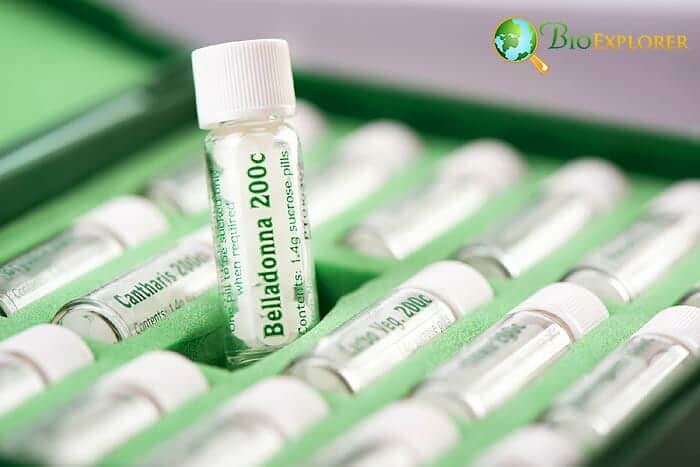
People have used herbal medicine for many centuries. Plants produce a variety of substances for their needs, many for defense purposes. What used to be the plant’s defensive weapons are now our integral medicines. It is especially true for the group of compounds called tropane alkaloids. One plant, the deadly nightshade or belladonna, is the source for three critical compounds:
- Atropine: The alkaloid is used in ophthalmology and for treating heart disorders.
- Scopolamine: This agent is derived from the same plant and is used for motion sickness treatment.
- Hyoscyamine: A less-known drug that is prescribed for various problems in the intestine.
Motion sickness, heart problems, and intestinal disorders are pretty common. This means that there is a high demand for them, which means that one needs to grow many needed plants or produce synthetic derivatives that may not be as effective. Another alternative is to create other organisms that can produce the same chemicals in bulk.
To do this, the team at the Stanford University used a standard model microorganism – Saccharomyces cerevisiae, baker’s yeast. The researchers have undertaken a significant replanning of the inner processes in the yeast cells:
- They have found a chain of reactions that could deliver necessary alkaloids as the end result and identified the genes for the participating enzymes.
- Some of the yeast proteins were engineered to become transporter proteins for carrying the produced chemicals to the cell’s vacuole.
- The cultures of modified yeasts were put under selection to find the organisms that produced the highest volume of the necessary molecules.
- In the end, strains of yeast were created that produced scopolamine and hyoscyamine.
- To create this strain, 28 modifications to the yeast chromosomes were needed.
- With the help of this strain, it can be possible to produce medicinal agents via fermentation, not growing necessary plants.
- Yeasts can be potentially rebuilt to produce other crucial plant-derived drugs.
Having an alternative way to produce necessary medicines is crucial in the current situation when wildfires and the pandemic can destroy large quantities of plants and also disable normal trade communications.
- Reference: “Biosynthesis of medicinal tropane alkaloids in yeast | Nature”. Accessed May 01, 2021. Link.
![]()
Biotechnological methods are expanding. It is now possible to completely rehaul the inner cell machinery to make the cells do what the researcher wants. Recent strides in nanotechnology open new horizons for vaccine and pharmaceutical industries.
New materials also influence the field of biology in unexpected ways. For example, recently, a new hydrogel was developed that can potentially replace nerves. Modification of cells has reached such heights that it is possible to create complex embryo-like structures in culture.
As scientists grow more knowledgeable about relationships between plants and insects, they can create unique safe repellents. Despite adversity, science does move forward – and brings us hope step by step.
![]()


